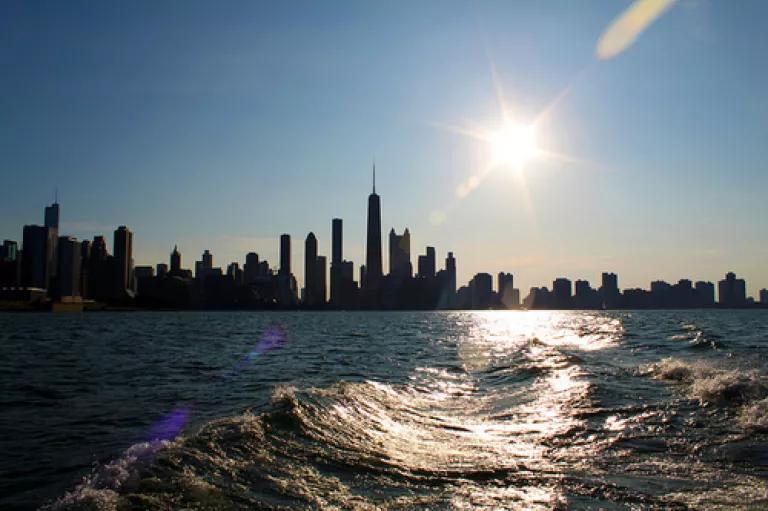Cities Are Already Cutting Carbon Pollution, New National Standards Will Expand Their Progress
Miami is known for glittering ocean-front hotels and sleek office towers, but most people don’t realize the city is turning its skyline into a tool for addressing climate change. All new large buildings constructed in Miami are designed to save energy. That means at the same time they are attracting business, housing, and pedestrians, they are also reducing climate change pollution.
I recently talked to the man behind this effort, former Mayor Manny Diaz. He launched Miami 21, a citywide plan that encourages smart growth and sets building standards to expand energy efficiency. According to Diaz, there were zero green buildings in Miami in 2005; now there are more than 200.
But Miami is not alone. When it comes to fighting climate change, Diaz said, “Mayors are already on board. Isn’t it interesting that, at the local level, Republican and Democratic mayors are doing all these things and there’s no fight. When things get [to Washington], this becomes totally partisan.”
Regardless of what’s happening on the national level, mayors are charging ahead with solutions. They see what extreme weather can do to their residents, businesses, hospitals, bridges, and roads. Miami, for instance, was singled out in the National Climate Assessment released last week as being vulnerable to sea-level rise. Local businesses there already have to cope with flooding at high tide. Former Mayor Diaz and countless other mayors are committed to making their cities more resilient and more focused on low-carbon energy.
In the process, they are demonstrating what is possible. When the Environmental Protection Agency proposes new limits on carbon pollution next month, fossil fuel companies and their allies in Congress will claim our nation can’t tackle this crisis. Cities across the nation prove them wrong.

Chicago is one of the many cities addressing climate change at the local level.
More than 1,000 mayors have signed the U.S. Conference of Mayors’ Climate Protection Agreement since 2005, pledging to reduce carbon emissions in their cities below 1990 levels. More than 160 mayors and county leaders have signed the Resilient Communities for America Agreement, an effort to help cities share tools for preparing for extreme weather and expanding clean energy.
And this winter, mayors from 10 of the nation’s largest cities—from Los Angeles to Denver to Atlanta—joined the City Energy Project, a partnership between NRDC and IMT, to scale up energy efficiency in large existing buildings. These buildings often account for more than half a city’s carbon emissions. By spurring investments in smarter lighting and more sophisticated heating and air conditioning systems, NRDC’s City Energy Project is expected to cut as much carbon pollution as taking 1.5 million cars off the road annually. It will also lower energy bills by nearly $1 billion every year.
Several of these big cities have already been hard at work. The Chicago Climate Action Plan, for instance, calls for reducing greenhouse gas emissions by 25 percent by 2020. It singles out energy efficiency as a critical tool for achieving these reductions, and it sets a goal of retrofitting half of Chicago’s commercial buildings by 2020—that adds up to 9,000 buildings.
Plenty of smaller cities are also getting in the act. Des Moines, Iowa, for instance, has made a commitment to reduce carbon pollution from city buildings by 25 percent by 2015. Mayor Frank Cownie has steered his city through floods and drought and was named to President Barack Obama’s Task Force on Climate Preparedness and Resilience. He is hosting the task force in Des Moines this week.
Mayors from Carmel, Indiana to Bridgeport, Connecticut are putting climate solutions in place right now. And they are reaping the benefits in the form of better preparedness, cleaner air, and greater cost savings. The EPA’s upcoming carbon limits will deliver these benefits to even more communities. Click here to tell the Obama Administration you support strong limits on carbon pollution.
Local leaders know what is at stake. As Mayor Diaz said, “When you think about it, the decisions you make, in terms of the physical environment, will impact your city for the next couple hundred years.” Let’s make the decisions that shield future generations from unchecked climate change.
Photo credit: Daniel Dionne
